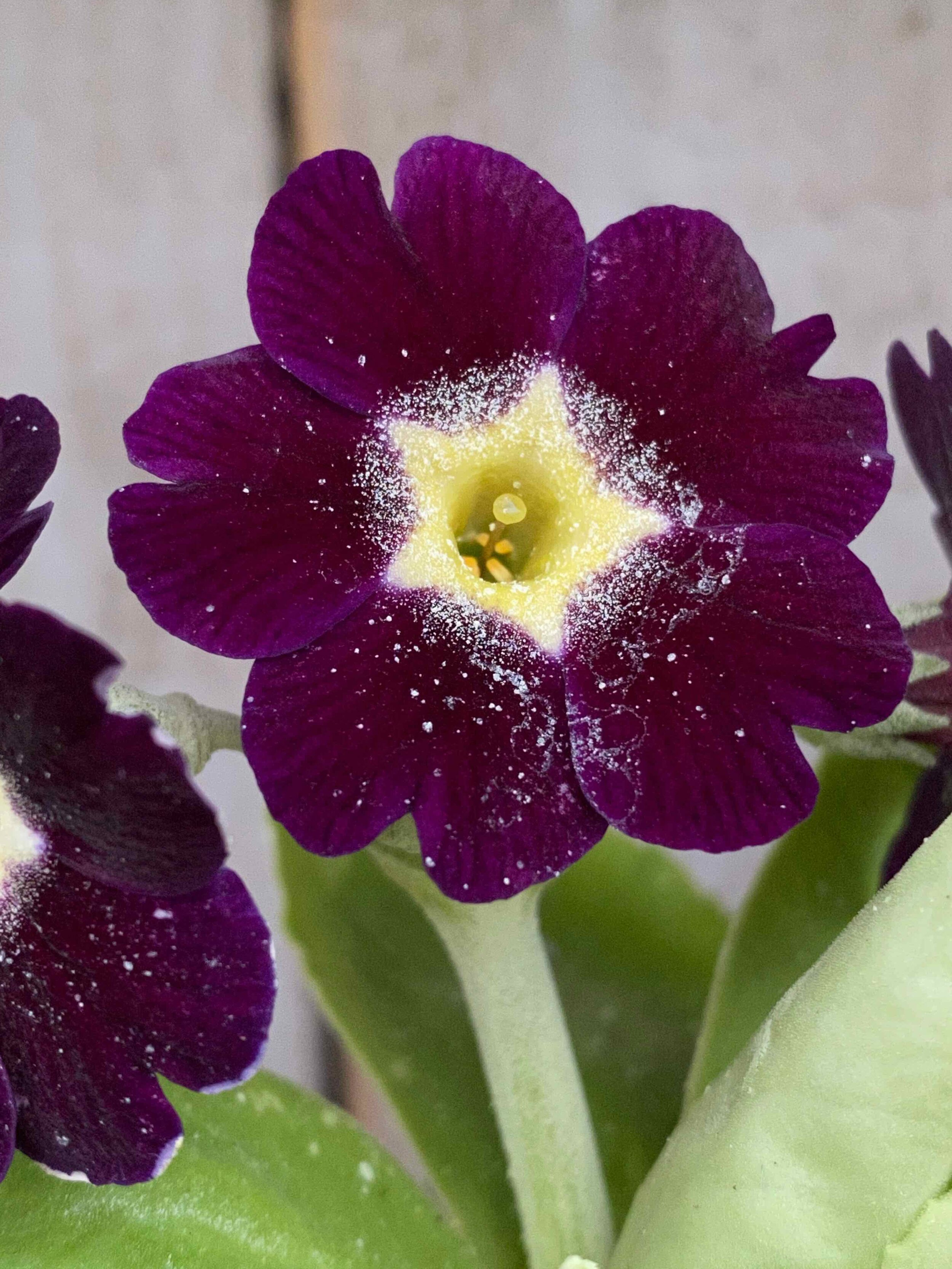Auricula Obsession
A few years ago I came back from Chelsea having seen the famous W&S Lockyer exhibit and ordered a collection of auriculas. Ever since then I have become obsessed. Although they have a reputation for being tricky, I have managed to keep them going and have increased my collection threefold by dividing plants in the autumn, with enough extra plants to give away.
There are various different types of auricula. The border types are the easiest to grow in a garden setting, with floriferous clusters of dolly-mixture flowers. The alpines, characterised by gold, cream or white centres, bright, glossy colours and rounded petals, are similarly easy to grow, but with slightly larger, showier flowers than the borders. Next come the doubles, and I love these for their tightly clustered rose-bud flowers, like bunched taffeta or silk (like the gold-coloured ‘Carmel’ above). Popular with the Florists in the 17th century, they fell out of fashion as the show auriculas took over, and have only started regaining popularity in the last 50 years. The show auriculas come in many forms, including single-colour selfs, edged auriculas, with white, grey or green-edged petals, fancies and stripes (like green ‘Psyche’ and pale yellow ‘Regency Paperchase’ above). Many of the shows and doubles have a dusting of white farina on their leaves or flowers, a mealy substance that is thought to be a type of natural sunscreen, and this means they can be easily damaged in rain.
I grow all my auriculas in 11-15cm terracota pots, and I can’t deny that they are fairly high maintenance. Preferring the cool, free-draining conditions that the plants would have in the wild (they are derived from the Alpine Primula auricula), they really don’t like too much heat and sun. I display them in a traditional auricula theatre on a northeast-facing wall, where they are also protected from the rain - but they don’t stay here all year round. After they have finished flowering I move them to a shady spot in the garden, and then they’ll come into the greenhouse for winter. In spring when they are in growth and flowering, they need plenty of water; in winter dormancy they need much less, but can’t be completely ignored. Autumn is the time to divide the plants, and this is done simply by tipping the pot up and gently pulling apart the offsets (see a short video here). You can replant these in smaller pots, and most should flower the following year. Another reason to keep repotting them is to check for the dreaded vine weevil, which is the main enemy of these addictive little flowers.
I struggled to find an auricula theatre when I first set out to buy one, so I designed on and had it made. I now sell these simple wall-hung cedarwood theatres in my online shop. Hand made in Dorset by a couple whose main trade is boat-building, they are extremely well made and designed to withstand the elements. And they can be used for many other small pot plants when the auriculas aren’t flowering! The best sources for mail order auriculas are Drointon Nurseries, Pops Plants or Wootens of Wenhaston.











